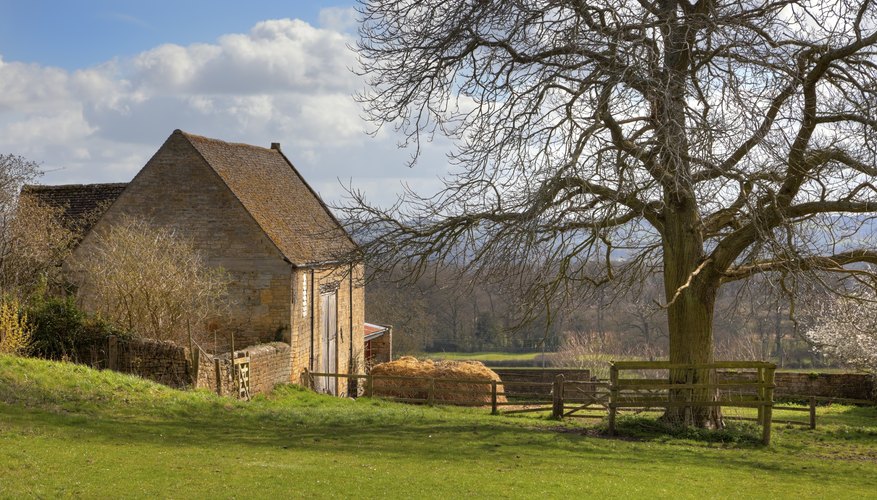A gable-end wall is made up of a sloped roof with a vertical wall, so that the end of the roof forms a triangle. Gable-end walls are stable in normal conditions, but they can be damaged in a heavy storm if they are not properly braced. Lack of bracing can cause the gable end to be torn off in a strong storm, causing serious damage to the rest of your home. However, it is possible to perform a retrofit to brace a gable-end wall. This will strengthen the gable end and anchor it more firmly to the ceiling and floor.
Specifications
Determine the maximum height of the gable-end retrofit studs you will need by measuring the lengths of the wall studs in the gable end that are more than 90 cm (3 feet) tall.
Find the basic design wind speed for your area by calling your local planning department or checking with the Met Office.
Determine your exposure category. Generally, if the wind approaching your house blows over an open area 90 m (300 feet) wide or wider and this open area is within 450 m (1,500 feet) of your house, then you are in exposure category C. If the wind blows over a narrower area, or the open area is more than 450 m (1,500 feet) from your house, then you are in exposure category B.
Use the design wind speed and the exposure category, to find the correct specifications for bracing your gable-end wall. This will tell you the amount of bracing you will need and where it should be placed.
- Determine the maximum height of the gable-end retrofit studs you will need by measuring the lengths of the wall studs in the gable end that are more than 90 cm (3 feet) tall.
- This will tell you the amount of bracing you will need and where it should be placed.
Installation
Attach 5 by 10 cm (2 by 4 inch) braces to the top surface of the ceiling joists using screws and fasteners. The chart will tell you the length of the brace and where it needs to be attached. Attach braces using a screw and fastener at each place the brace crosses a ceiling joist, and at the bottom of the roof truss. Braces should extend across at least three joists, and at least 7.5 cm (3 inches) beyond the joist.
- Attach 5 by 10 cm (2 by 4 inch) braces to the top surface of the ceiling joists using screws and fasteners.
- Attach braces using a screw and fastener at each place the brace crosses a ceiling joist, and at the bottom of the roof truss.
Install studs and strapping. This will reinforce the wall studs and strengthen the connections between floor and roof braces. Attach metal straps at both ends of existing wall studs. Use the chart in Resources to tell you the length of strapping and the number of fasteners needed for your house.
Attach bracing studs to the horizontal braces at both the top and bottom of the braces. Use fasteners and metal straps. Attach a compression block to the top and bottom of the brace using screws. The block will help brace the new studs. Blocks should be attached over the top of the straps.
Connect the bottom of the gable-end wall to the top of the wall below it. If the gable-end wall is truss framed, this should be done using a right angle metal bracket. Connect the bracket to the wall using screws and fasteners. If the gable-end wall is conventionally framed, install the screws so that the gable-end wall is connected directly to the top of the wall below. Use the table in Resources to determine the correct spacing between the brackets for your specifications.
